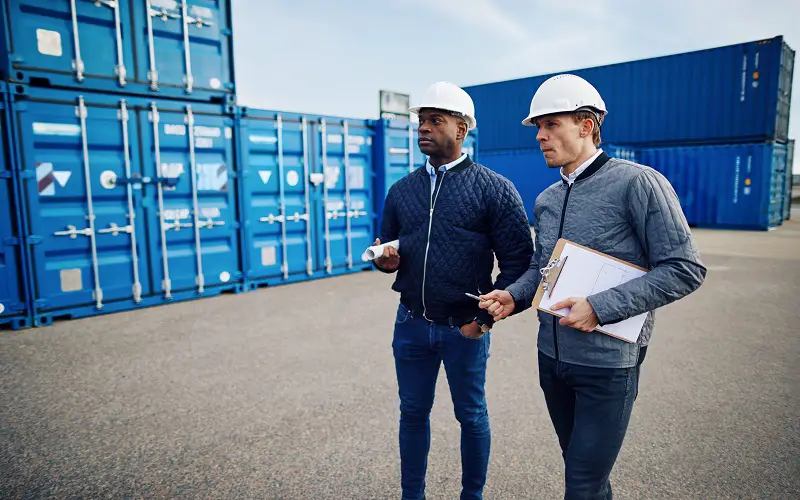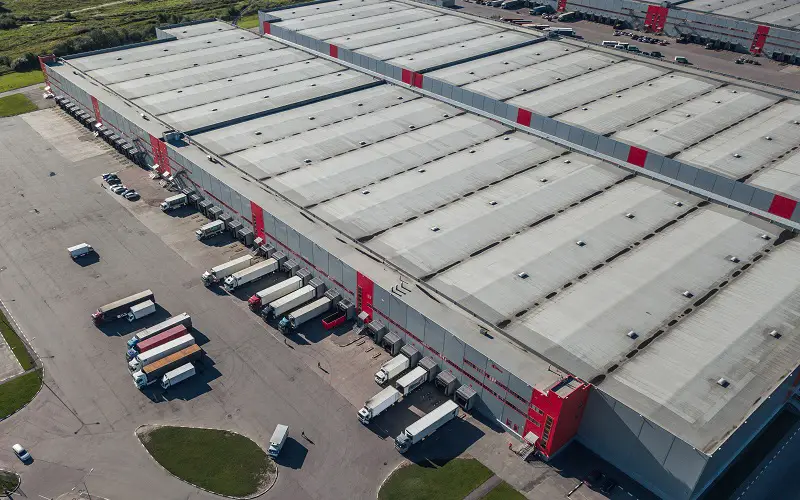Transportation in business is the movement of a product or factor of production from one source, either the warehouse, workshop, or factory, to a given destination such as a retail store or client’s address. On the other hand, logistics refers to flow management from a given point of origin to the final destination. It covers how goods are obtained from a certain point, stored, and relayed to the right destination.
What is Transportation Logistics?
Now that we understand what transportation and logistics mean when used independently, it is time to define transportation logistics to get a vivid picture of our subject of discussion. Transportation logistics summarizes the meanings of both terms. Therefore, it is the management of goods as they leave from one point to another, usually from the manufacturer to the end-user. It manages the material as it moves through the supply chain.
Transportation logistics ensures that products are transported safely and efficiently, regardless of the means used, making it an important part of the supply chain. It is through it that the distribution process is made possible.
Process of Transportation Logistics
Inventory Management
Inventory management refers to ordering, storing and selling a company’s products. Transportation logistics extends to the sourcing of products or factors of production to be sold or used in the manufacturing process. Inventory management ensures the right quantity of goods or products to be sold at any particular time, helping the business live up to the expectations of its customers. It should definitely be optimized.
Order Fulfillment
Transportation logistics concerns itself with the management of material throughout the supply chain. It, therefore, begins with order fulfillment once payment has been confirmed. Order fulfillment refers to all the steps taken to prepare the goods and prepare them for shipping, such as loading the goods into a truck, ensuring compliance with the existing laws and regulations, and organizing everything needed to make delivery a success.
Transportation Management
Transportation management is the next process after order fulfillment and is the most important in the transportation logistics process. It involves overseeing the movement of goods from one point to another, usually from the warehouse or company to a client/end-user. This is normally done after confirming that the vehicles are in proper condition to ensure that the shipments reach their destinations safely.
Transportation management also involves tracking the shipments to ensure that the vehicles are following the right route for faster delivery. The company is additionally advised to pool shipments during transportation management to save on costs.
Delivery
Once the order has been fulfilled and the goods transported in trucks, the next is delivering them to the recipient, which should be done carefully. The person delivering the goods should ensure that they have the right delivery address and confirm the recipient’s identity to prevent goods from falling into the wrong hands. The recipient should also assess the products, check for any issues, and issue a delivery note confirming that the goods reached their final destination.

How to Optimize Transportation Logistics
Route Optimization
One of the best ways to optimize transportation logistics is route optimization, where the logistics manager determines the most cost-efficient route. It is more challenging than it sounds since all the relevant factors must be considered, such as the delivery time windows, locations of all the required stops and their total number.
Other factors to be considered during route optimization are the best places to stop, traffic congestion at a particular time, the nearest driver to handle dispatch, the number of intersections along a given route, and the left-hand turns. It helps reduce time and inconveniences for maximum customer satisfaction, translating into business continuity. You can use several route optimization software for this.
Vehicle Tracking
Vehicle tracking monitors the location or movement of a truck through the GPS. It tells you where it is at a given time and is usually made possible through a tracker, often hidden. It comes in handy whenever a truck fleet has been deployed and ensures that the vehicles are on the right route and are being used properly at any given time.
Tracking will also allow you to get hold of a vehicle or truck when it gets lost, allowing you to recover your goods and avoid losses.
Routine Checking of Vehicles
Performing routine checks is necessary to reduce costs and prevent several issues that may affect the transportation process. Periodic maintenance of vehicles or trucks used in transportation helps prevent unnecessary breakdowns during transport and further extends your vehicle’s lifespans, saving you costs in the long run. Remember, you cannot also fulfill a shipment when your truck breaks down, which explains why you must perform routine inspections and maintenance.
A good idea would be to use an automated asset management system to schedule maintenance, assign inspectors, and perfom several routine checks to keep your vehicles in good condition.
Shipment Pooling
This is one of the best ways of optimizing transportation logistics. As the name suggests, shipment pooling involves combining different shipments headed to the same destination into one to cut transportation costs and save your trucks from unnecessary wear and tear. From a bigger picture perspective, you will also be able to conserve the environment by reducing emissions or carbon footprints by minimizing your fleet.
Transportation Management System Optimization
A transportation management systems leverage technology to help different entities or warehouses optimize incoming and outgoing goods movement. It is a good transportation system solution as it makes the shipment process more visible, carries information about compliance requirements and deals with driver shortages.
Optimization of the transportation management system simplifies the transportation process, ensuring that goods are delivered quickly. It also helps companies improve their transportation process, regardless of the means used.
Conclusion
Transportation logistics oversees the movement of goods in the supply chain and, therefore, ensures that products reach their intended audience while in the right state. Companies should optimize transportation logistics to save on costs and keep customers happy. Fortunately, there are a lot of software they can use.




